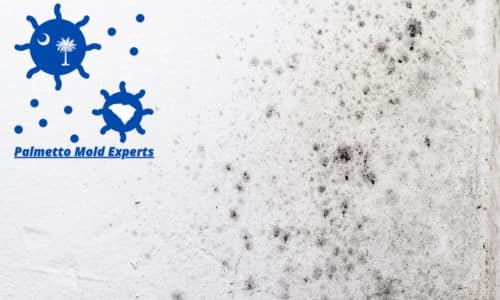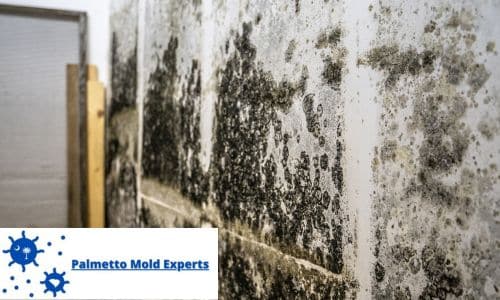
In South Carolina, How Does Water Damage Cause Mold?
Key Takeaways
- Comprehending the Connection between Water Damage and Mold
- Different Factors Leading to Mold Formation
- Signs and Consequences of Mold Due to Water Damage
- Dangers and Hazards Associated with Mold
Understanding the Relationship between Water Damage and Mold
Water damage and mold have a complex relationship that often goes unnoticed until it becomes a significant problem for homeowners. Mold growth is a common issue that arises as a result of water damage, with black mold being a particularly concerning type that can pose health risks. The process of how mold develops from water damage is a secret that many homeowners are unaware of until they spot telltale signs like orange or grey spots on ceilings, water stains on walls, or a musty odor in the air. Mold growth can occur on various surfaces within 24 to 48 hours of water exposure, highlighting the importance of quick intervention to prevent further problems. Understanding how water damage causes mold is crucial for homeowners to address weaknesses in their home's structure and prevent potential health hazards associated with mold growth.
The Process of How Mold Develops from Water Damage
Mold thrives in damp, humid conditions, making it a common aftermath of water damage. When water saturates your living space, the likelihood of mold growth increases significantly. If left unchecked, mold can develop rapidly and silently, even in places unnoticed by the naked eye. Particularly in warm and moist climates, the risk of mold infestations is heightened, posing severe health risks to anyone exposed. Mold can appear in various forms, from yellow spots on walls to musty odors lingering in rooms. Over time, it can cause structural issues like warping, rot, and discoloration of materials, including paper and food. It is crucial to address water damage promptly to avoid extensive repairs and health complications.
Mold is a member of the fungi kingdom and can multiply within 24 to 48 hours in areas affected by water intrusion. The process of how mold develops post-water damage is swift, especially if the affected area is not thoroughly dried. Mold growth can occur visibly on walls with water stains or yellow discoloration and stealthily within structures like drywall. The dangers of mold exposure are grave, leading to respiratory ailments, skin rashes, headaches, and other health issues, particularly affecting vulnerable groups like children and the elderly. To prevent the escalation of mold infestations, it is crucial to invest in water damage removal, mold remediation, and mold cleaning processes, along with ensuring proper ventilation and humidity control in your home.
Situations Leading to Water Damage and Subsequent Mold Growth
Water damage can result from a variety of situations in a home. For example, a burst pipe, leaking appliances, or issues with sewer systems can all lead to water leaks. Roof or ceiling leaks and problems with the HVAC system can also cause water damage. Sometimes, a simple ceiling plaster crack or a leaky AC vent could be the culprit. Even a minor leak from an attic or a floor fan placed in the wrong section of the house may cause water damage. Homeowners need to take immediate action and contact a plumber or water damage restoration specialist when faced with such instances to prevent mold growth in the future.
When water damage is not addressed promptly, mold can thrive in a home. Mold growth can be remarkably swift if areas in the house remain damp. For instance, if a ceiling leak saturates floorboards or water seeps into spaces around windows, there's a high chance for mold spores to spread and create a mold frenzy. Mold usually forms in sheetrock, drywall, or wood materials. Moisture trapped in these surfaces presents an ideal environment for mold to grow. To mitigate the risk of mold growth resulting from water damage, homeowners must ensure proper moisture control and quick drying of affected areas within 24 to 48 hours.
- Inspect your home regularly for any signs of water leaks or damage.
- Address any plumbing issues promptly to avoid water seepage.
- Check appliances for leaks or malfunctions that could lead to water damage.
- Keep an eye on your HVAC system for any potential water-related problems.
- Act quickly to dry out any wet areas within your home to prevent mold growth.
- Contact a professional water damage restoration specialist when necessary.
The Various Causes of Mold
If areas in your home haven't thoroughly dried after water damage, mold can proliferate. Mold forms in sheetrock, on flooring, walls, and ceiling fans. It can develop on surfaces within 24 to 48 hours of water exposure. It depends entirely on how severe the water intrusion was. If the home is not completely dry within approximately 24 hours, mold will grow. Water causes wood to warp and releases spores into the air. Though often not visible to the naked eye, mold can significantly threaten health. Mold can be a severe problem, especially in flooding, repairs, mildew, and storm events. Precautions should be taken to prevent mold growth, involving dehumidifiers, fans, and windows to regulate humidity levels. Professional services such as mold remediation firms, mold assessment firms, and mold specialists can help with mold testing, assessment, and remediation. It's essential to address water damage promptly to prevent mold growth and its associated health issues.
How Water Leaks Lead to Mold Development
Water leaks can be a nightmare for homeowners, leading to extensive damage, especially when not promptly addressed. But how does water damage cause mold? If areas in your home haven't thoroughly dried within approximately 24 hours, mold will begin to grow. This can be tricky to handle, as mold usually forms in materials like sheetrock, causing wood to warp and mold to develop on surfaces within 24 to 48 hours of water exposure. To prevent mold growth, it's crucial to act fast and ensure proper drying of affected areas or seek assistance from a reputable restoration company like Jenkins Restorations.
When faced with water leaks, it is essential to take immediate steps to mitigate further damage and potential mold growth. If the home is not completely dry within the critical 24-hour time frame, mold spores will be released into the air, posing health risks to your family. Mold growth can lead to a variety of health issues, including difficulty breathing, fever, and aggravation of asthma symptoms. Homeowners may consider spraying bleach on affected areas, especially on hard surfaces like floors and furniture, to help block mold growth. However, for extensive water damage and mold problems, it's best to consult with professional restoration companies like Jenkins Restoration to ensure a thorough drying process and prevent long-term consequences.
Flooding Incidents Creating Conditions for Mold Spores
Flooding incidents are a common source of water damage that can create ideal conditions for mold spores to thrive. When disaster strikes and water floods your home, it is essential to take immediate action to prevent mold growth. If areas in your home haven't thoroughly dried within 24 to 48 hours, mold will grow rapidly. Mold usually forms in sheetrock, wood, drywall, and other porous materials, as the excess moisture provides the perfect environment for mold to develop. Therefore, quickly drying out affected surfaces and using tools like dehumidifiers and air conditioning units can help prevent mold from taking hold.
One of the main concerns with flooding incidents is the potential for mold growth on standing water spots and damp surfaces. Mold can cause wood to warp, leading to structural damage in homes. If water leaks are not promptly fixed and spaces are not adequately dried, mold can develop on various surfaces. To combat the growth of mold spores, it is crucial to address the source of the water, whether it is from leaking pipes, a faulty roof, or flooding. Taking quick measures and contacting a professional technician to assess the damage can help mitigate the risks of mold infestation and potential health troubles for the people living in the affected property.
Indicators and Impact of Water Damage Induced Mold
Water damage can lead to mold growth since mold spores are always present in our environment. If areas in your home haven't thoroughly dried after water intrusion, it releases spores, and mold can grow quickly, usually within 24 to 48 hours. Mold forms in sheetrock and can develop on baseboards, ceiling tiles, or flooring surfaces. The culprits are traditionally leaks from pipes, plumbing issues, flooding incidents, or spills that haven't been adequately addressed. Mold can cause many health issues, ranging from mild allergies to lung infections or other serious illnesses. To minimize health risks, it's crucial to conduct mold testing and air quality tests, preferably by a professional mold inspector.
Recognizing the Symptoms and Signs of Mold
Mold is a common issue in homes following water damage, and it is essential to recognize the signs and symptoms to prevent health effects. Musty odors, discoloration on surfaces like walls or ceilings, and moisture buildup in certain areas of the home are all key indicators of potential mold growth. Mold can also lead to respiratory issues like bronchitis and asthma, making it crucial to address the problem promptly. If you notice any of these signs, it's advisable to consider professional mold inspections and mold testing services to determine the extent of the issue.
Identifying visible signs of mold, such as black spots on walls or ceilings, can indicate a more severe problem within the structure of your home. Mold typically grows in hidden areas like wall cavities or under floor tiles, making detection challenging. In some cases, mold growth may even go unnoticed until it causes substantial damage to the property. Thus, conducting mold screen testing or taking samples for mold testing from potentially affected areas can help determine the species of mold present and its severity. These proactive measures can assist in prompt mold removal and remediation to safeguard your health and prevent further structural issues.
Possible Health Problems from Mold Exposure
Mold exposure can lead to various health problems for individuals. Black mold exposure, in particular, can cause serious issues with lung health, triggering respiratory conditions and potentially exacerbating existing ailments. When dealing with mold-infested homes, it is crucial to seek the expertise of mold removal professionals to ensure thorough remediation. Identifying the specific type of mold, such as Stachybotrys chartarum or cladosporium, is essential for creating effective remediation strategies tailored to the mold species present in the property. Prompt mold removal not only safeguards the property but also protects the well-being of the family residing in the home.
Risks and Threats Linked to Mold
When it comes to risks and threats linked to mold, understanding how water damage causes mold is crucial. Water leaks or flooding incidents can lead to mold development, especially in hidden areas like crawlspaces, garages, or attics, where moisture can linger unnoticed. Signs of mold growth can include patches on walls, ceilings, or flooring, which may range in appearance from brown or olive green to black. Mold can also be found on carpets, furniture, paper, or fiberboard. Mold exposure can pose severe health risks, from allergic reactions to respiratory issues and even long-term diseases affecting the lungs or immune system. It's essential to address water damage spots promptly and consider contacting a water remediation company or mold remediation experts to prevent mold from spreading and causing further health concerns.
- Proper ventilation and humidity control are vital in preventing mold growth
- Regularly inspect and maintain plumbing systems to prevent water leaks
- Address any water damage promptly to prevent mold development
- Use dehumidifiers in areas prone to moisture buildup
- Seek professional help for mold remediation in severe cases
Dangers Posed by Unaddressed Mold Growth
If areas in your home haven't thoroughly dried after experiencing water damage, there is a chance that mold will start to grow. Mold can harm individuals with asthma or allergies, causing symptoms such as coughing, sneezing, headaches, and mucus membrane irritation. Furthermore, unaddressed mold growth can lead to long-term health consequences like lung disease, fatigue, inflammation, and even cancer. Mold can also cause various physical symptoms, including nausea, sneezing, and throat irritation, making it essential to address any mold problem promptly. Mold colonies can burst on all surfaces, including carpeting, bedding, clothing, and building materials, allowing further exposure to harmful toxins.
To ensure the safety of your living environment, it is crucial to engage mold remediation professionals to assess and address any mold issues promptly. Mold remediation involves a series of steps, including identifying the source of the moisture, removing affected materials, and using air filtration equipment to reduce mold levels in the atmosphere. Failure to address mold growth can result in serious health risks, including mycotoxicosis, mold poisoning, and various illnesses linked to mold exposure. Therefore, it is vital to take decisive action when faced with mold problems to prevent further harm to your health and living conditions.
Long Term Health Consequences of Living with Mold
Living with mold can have serious long-term health consequences. Mold can lead to various health issues, including allergies, skin rashes, irritations, coughing, breathing difficulties, and infections. Many people may experience reactions such as wheezing, shortness of breath, and respiratory problems when exposed to mold spores. Paintings, carpets, and even wood beams or chimneys can become affected by mold growth, necessitating reconstruction and restoration work to address the problem effectively.
When mold is present in a property, it poses risks not only to the building but also to residents and guests. Mold allergies are common among individuals exposed to mold, leading to discomfort and health problems. Professionals in restoration services often use air scrubbers, air pressure, and barriers to contain the spread of mold during the cleanup process. Rapid response from restoration teams is crucial to prevent the growth and spread of mold throughout the home. The severity of mold reactions can vary, with some people experiencing more severe symptoms that require immediate attention from healthcare professionals.
Expert Advise
When it comes to the impact of water damage on mold growth, it is crucial to understand how mold develops from water damage. Water leaks and flooding incidents can create the perfect conditions for mold spores to thrive and spread throughout a property. If areas affected by water damage are not promptly and thoroughly dried, mold can begin to grow quite quickly. Mold usually forms in materials like sheetrock, plywood, carpets, fiberglass insulation backing, and on surfaces like walls and ceilings. The most common types of mold found in buildings include Aspergillus, Alternaria, and Atra, which can seriously affect individuals exposed to them. Therefore, it is essential for property owners to look for signs of mold infestation, such as the appearance of black, grayish-black, or brownish-black patches, dots, or patches, along with a musty odor. In cases of mold presence, contacting mold remediation experts for thorough inspection, removal, and cleaning is critical to ensuring the health and safety of employees and residents and preventing long-term health consequences associated with mold exposure.
FAQS
Can water damage lead to mold growth in a property?
Yes, water damage can create the perfect conditions for mold to develop and thrive in a property.
What are some common situations that can lead to water damage and subsequent mold growth?
Leaking pipes, roof leaks, flooding, and improper ventilation are common situations that can result in water damage and mold growth.
How do water leaks contribute to the development of mold in a property?
Water leaks provide the moisture that mold spores need to grow and spread, leading to mold development in areas with water damage.
What are some indicators and impacts of water damage-induced mold in a property?
Musty odors, visible mold growth, respiratory issues, and property damage are some indicators and impacts of mold resulting from water damage.
What are the potential health problems associated with mold exposure?
Mold exposure can cause respiratory issues, allergic reactions, skin irritation, and other health problems in individuals living or working in mold-infested environments.


Have a question about mold in South Carolina? Find Answers here with our mold frequently asked questions:
Have a question we haven't answered? Contact us and let us know!
- Can You Live In A House With Mold?
- How to Remove Mold From Inside Walls
- What to Do If You Find Mold in Your Home in South Carolina?
- Indoor Air Quality And Mold Prevention
- Residential Mold Removal Methods
- Does Mold Have To Be Professionally Removed?
- When Is Mold Remediation Required?
- Mold Inspection For Apartments in South Carolina
- Mold Inspection And Testing Tips
- Health Department Mold Inspection in South Carolina
- How Do I Get My House Tested For Mold?
- How Much Does Mold Remediation Cost?
- Can A Homeowner Remediate Mold Yourself?
- Does Mold Remediation Really Work?
- What Is The Difference Between Mold Removal And Mold Remediation?
Find Us Here:

